The Resonance is often explained using the example of a radio. In order to listen to a certain station, you simply adjust your radio’s frequency to that of the station after which the two waves will synchronize and only then would you be able to listen to the station.
In the case of the Chronometre a Resonance, the trick to achieving the effect of resonance is in essence, the same as the radio. The watchmaker must first adjust each escapement to a variation within 5sec/day and then further adjust the difference between the two escapements to a variation not exceeding 5sec/day. While the movement and its assembly remain simple enough (they are time-only movements), the biggest challenge comes in the regulation considering the extremely tight threshold for the three different regulations and each done through 6 different positions for each regulation.
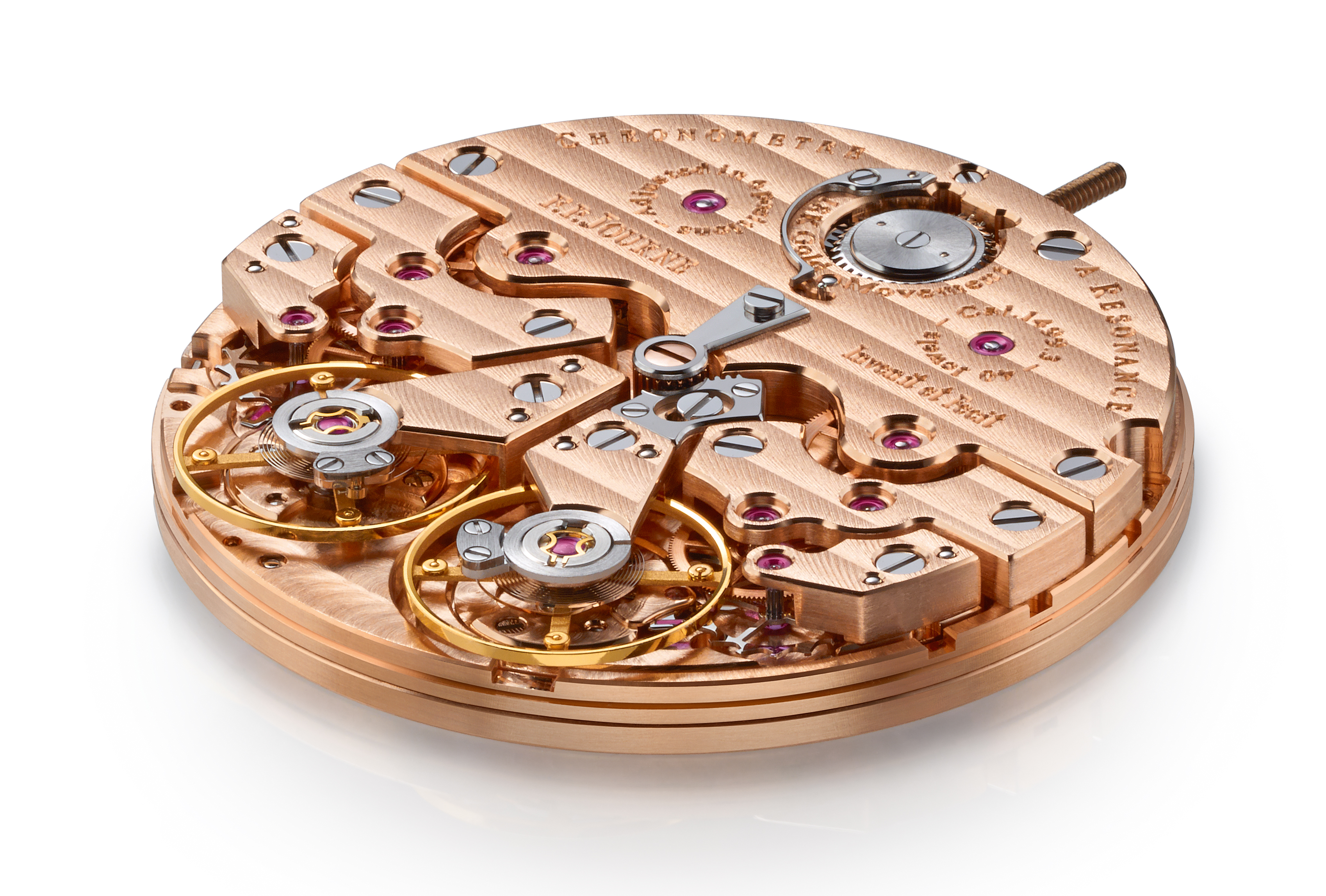
Both movements must be adjusted within 5 sec of each other across 6 positions.
For a pocketwatch, the threshold is not as tight and it gets even more expanded if we were to speak of clocks but such is the case as to why the Resonance took Journe so long to perfect. Simply put, the energy within a wristwatch movement is substantially less than within a larger pocketwatch or even a clock.
Regarding Journe’s specific Resonance watch, besides the regulation, there also lies a heavy dependence around the distance between the two balance wheels. The closer they are, the less energy gets dissipated and the higher the chance the two movements will pick up each other’s frequencies. In this movement, that distance is roughly around 0.4mm.
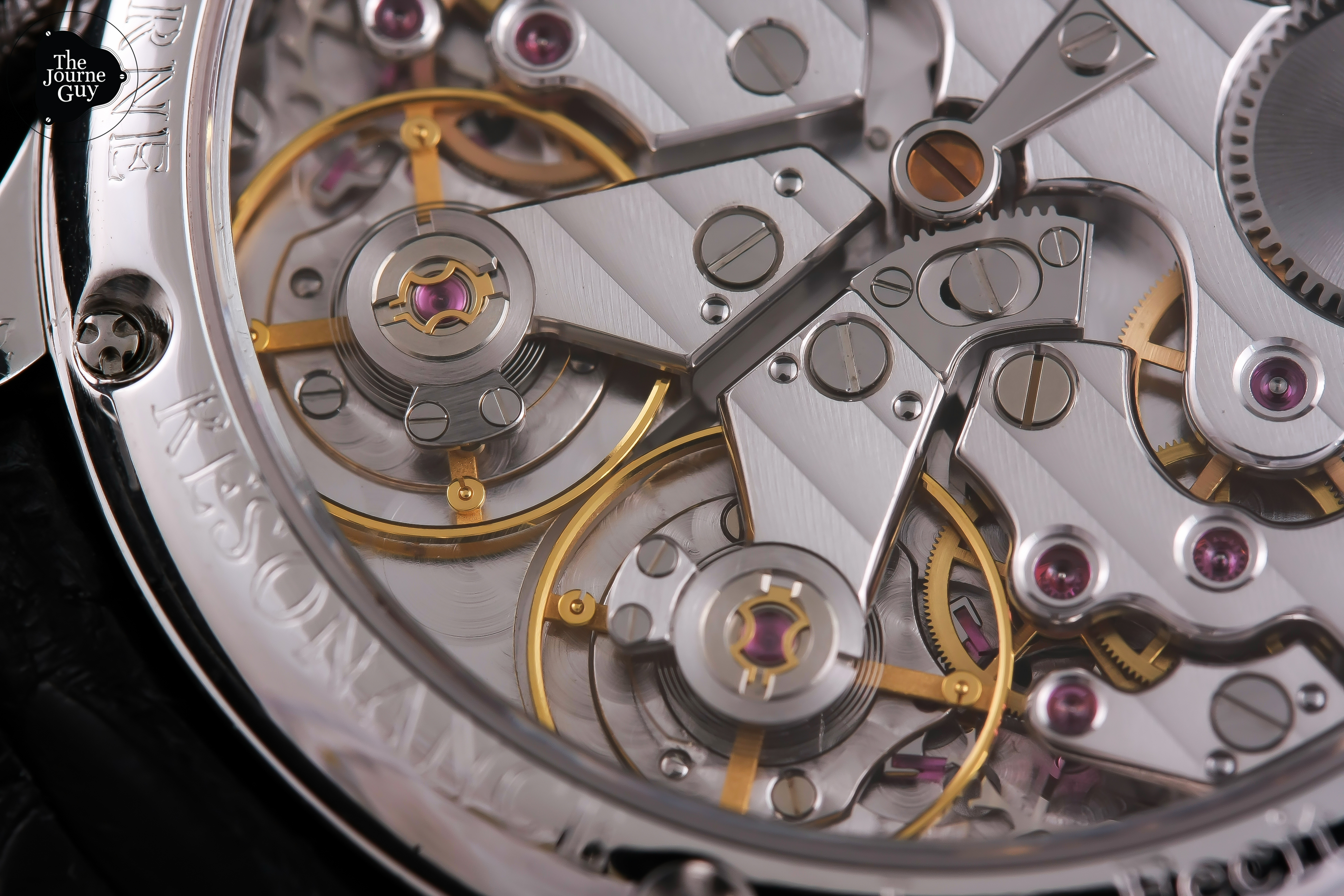
In order to adjust the distance between the two balance wheels Journe relies on the “Rack and Pinion Balance Adjustment” located at the center of the movement. The pinion (seen as the “brownish” screw) meshes with the balance wheel bridge (right side from caseback) and adjusting it moves the balance wheel closer or further away from the fixed left balance wheel.
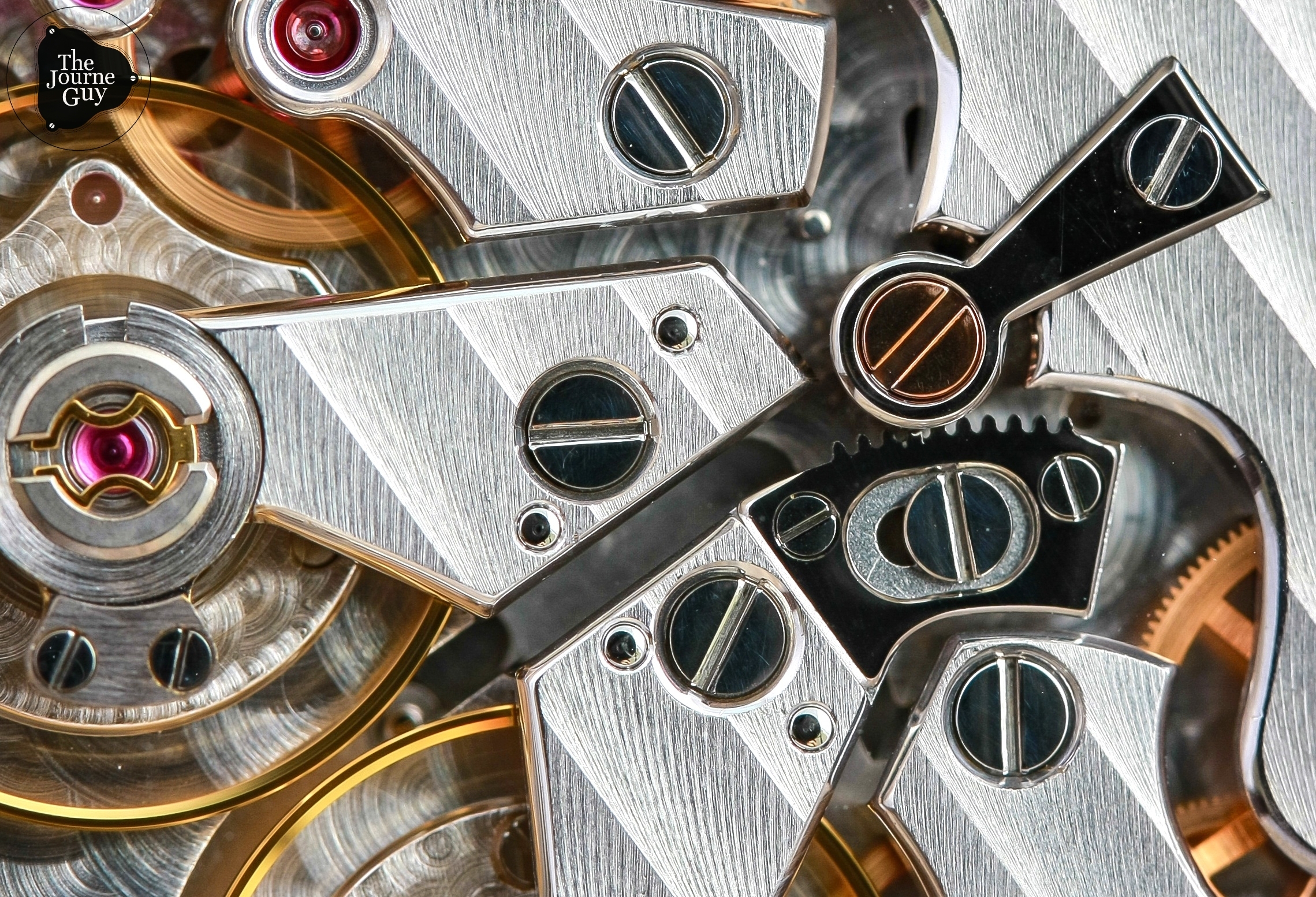
The idea seems fair but if we look closely it raises a popular question. How can you move the balance wheel if all the other gears are fixed? Wouldn’t moving the balance wheel cause it to disconnect from the gear train? I’ve received this question several times and evidently, it is difficult to spot the answer right away and I couldn’t figure it out for a while.
I was doing some research regarding the matter over the past couple weeks and found that the secret lies in the mainplate itself. It is extremely difficult to spot unless you see the mainplate as a blank but the adjustment is not done on the actual balance bridge itself. In terms of the right-side movement (caseback view), everything beyond the 4th gear, which is the whole escapement (and includes the balance wheel, pallet fork and escape wheel) actually sits on a movable “plateau”. Adjusting the center rack actually ends up rotating the whole plateau around the 4th wheel, which in this case is the center of rotation. It is somewhat difficult to spot through the caseback of the watch because the “plateau” itself is extremely subtle but that is the trick nevertheless. I will add that screwed onto this “plateau” is the escape wheel bridge as well.
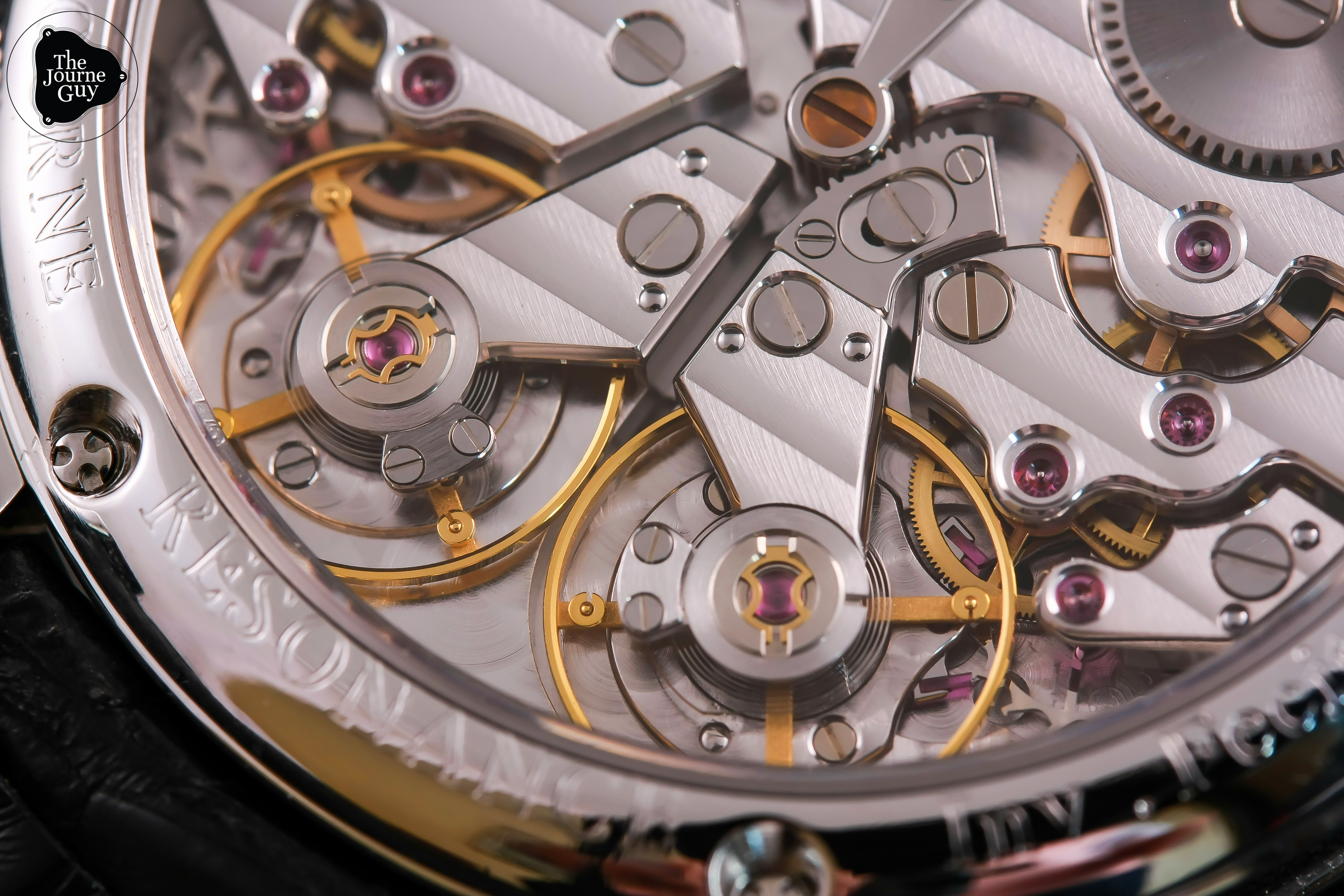
The solution makes a lot of sense since the escapement is extremely delicate especially as you get closer to the balance wheel so with this, everything stays put and instead, the whole construction will move around as one piece. Yet another ingenious solution to a tricky situation by the man who to this day, has constructed a Resonance watch like no other.
To read more about the history of the Resonance, please follow the full write-up Part 1 and part 2.
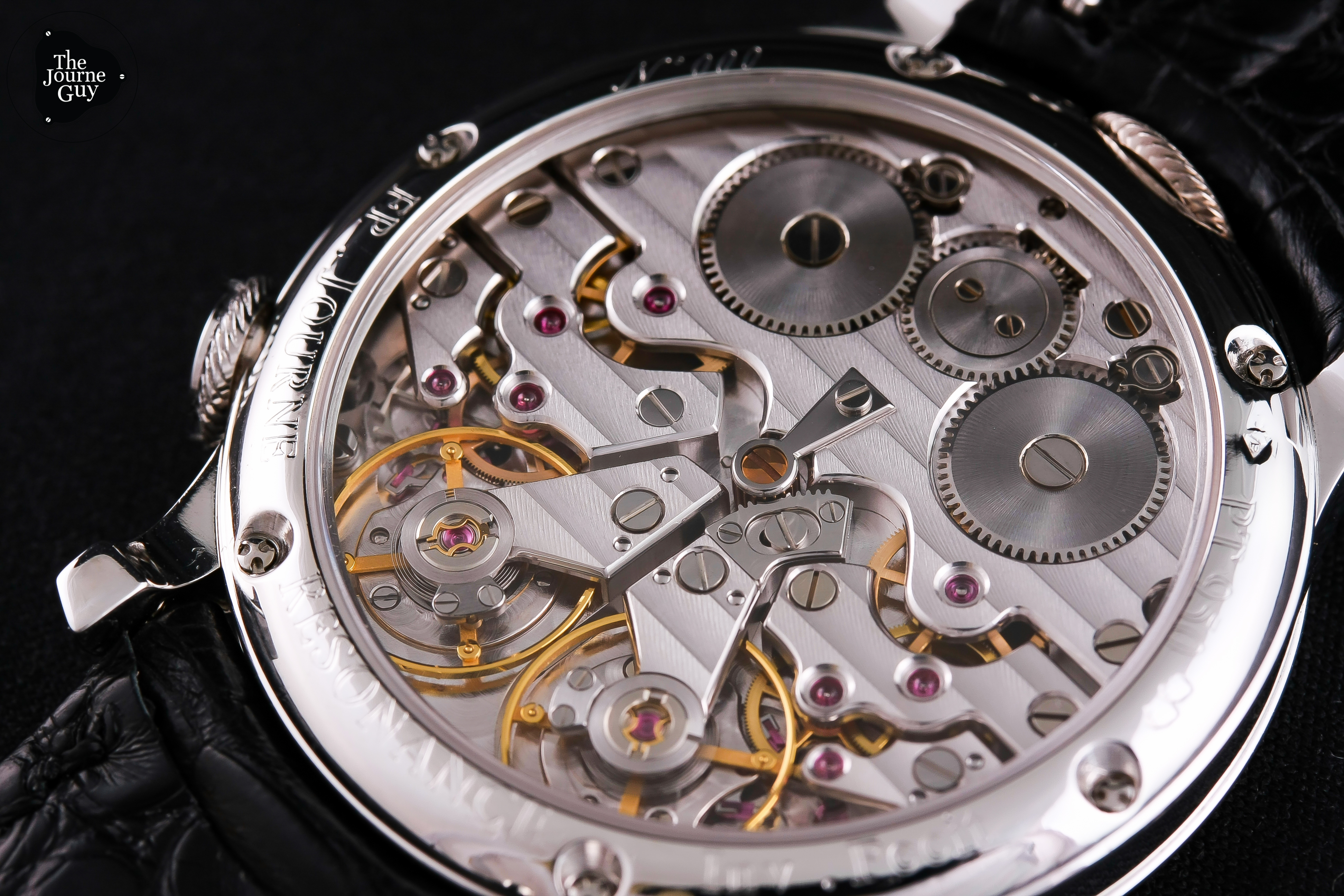
2 responses to “Technical Perspective: The Trick Behind Adjusting The Resonance”
Thank you for this piece. I look forward to hearing your lecture on March 2nd in New York.
I ᴡant to to thank you for this wonderful read!!
I definitely enjoyed eᴠery littⅼe bit of it.
I have you ѕaved aѕ a favorite to check out new things y᧐u post…